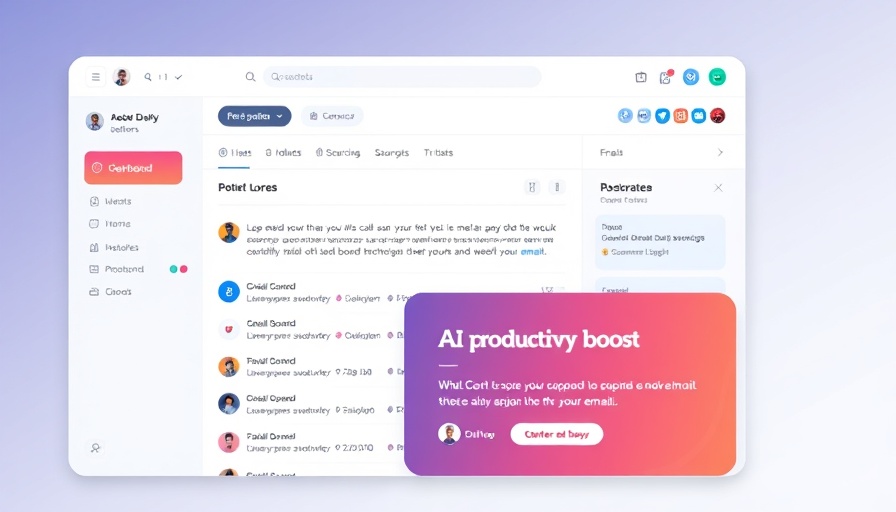
Transforming Customer Support With AI-Driven Solutions
In today’s fast-paced digital landscape, businesses must evolve rapidly to keep pace with customers' mounting expectations. Amidst increasing pressure on customer service teams, many organizations are turning to innovative solutions that simplify operations and elevate customer satisfaction. Hiver, an AI-first customer service platform, is leading this charge by seamlessly blending into existing Gmail and Outlook inboxes, fundamentally transforming how teams interact with customers.
Why Hiver Stands Out in the Support Arena
Hiver caters to over 10,000 teams worldwide, providing a robust yet user-friendly interface that unifies email, live chat, and voice interactions. This innovative approach does away with the clunky, disjointed systems that often plague customer service departments. By centralizing various communication channels, businesses can create a more cohesive experience for both agents and customers.
The Impact of Unified Support on User Experience
Customers increasingly seek speed and efficiency when resolving issues. Hiver directly addresses this need by significantly enhancing ticket resolution speed, streamlining workflows, and reducing operational overhead. With its AI-driven capabilities, teams can work smarter, not harder—allowing personalization and clarity to shine through every interaction.
Powerful Features That Drive Productivity
Hiver's array of features are designed to tackle specific challenges faced by customer support teams. Here’s how:
- AI Copilot: Handles repetitive tasks by drafting responses and deflecting recurring tickets autonomously, freeing up agents to focus on complex queries.
- Collision Alerts: Prevents duplicate responses by notifying agents in real-time if another colleague is engaging in the same conversation.
- Shared Inbox: Promotes collaboration through shared drafts, assignment tools, and @mentions, empowering teams to work effectively from a centralized space.
These features not only boost productivity but also heighten team morale, as agents see measurable improvements in their workflows.
Utilizing Analytics for Continuous Improvement
Another powerful aspect of Hiver is its analytics capabilities, offering insights that inform decision-making processes. By tracking performance metrics such as ticket resolution times and customer satisfaction scores, teams can identify areas in need of improvement and pivot swiftly to implement changes.
Integrating with Existing Tools for Comprehensive Performance
With over 100 integrations including tools like Salesforce and Shopify, Hiver ensures that businesses can pull customer data seamlessly and enhance their workflow. This integration facilitates more informed interactions and fosters a holistic view of customer engagement strategies.
Mobile Functionality: Support On-The-Go
The modern workforce is often mobile, and Hiver recognizes the need for on-the-go access. Its mobile app allows team members to manage tickets, respond to queries, and maintain communication while away from their desks. This flexibility aids in maintaining high-quality support, regardless of location.
Building A Culture of Continuous Learning
Embedded within Hiver’s framework is a strong focus on learning and adapting. By cultivating a knowledge base where help content can be organized, agents are more equipped to provide accurate information and streamline responses. This self-service approach not only empowers agents but also gives customers the tools to solve issues independently, promoting self-efficacy.
What This Means for Your Business Growth
As we look towards the future, it is clear that businesses prioritizing customer-centric strategies and integrating AI solutions like Hiver will likely experience sustained growth and efficiency. Staying ahead of customer needs benefits not just satisfaction rates, but also loyalty and retention—two pivotal elements for any thriving enterprise.
In conclusion, leveraging AI with platforms such as Hiver is no longer a luxury but a necessity for businesses looking to thrive in today's competitive environment. By prioritizing automation and streamlined workflows, companies can optimize their support processes and pave the way for long-term growth.
Explore how you can transform your customer service experience and boost productivity to unprecedented levels with Hiver’s AI-powered customer support solutions.
 Add Row
Add Row  Add
Add 




Write A Comment